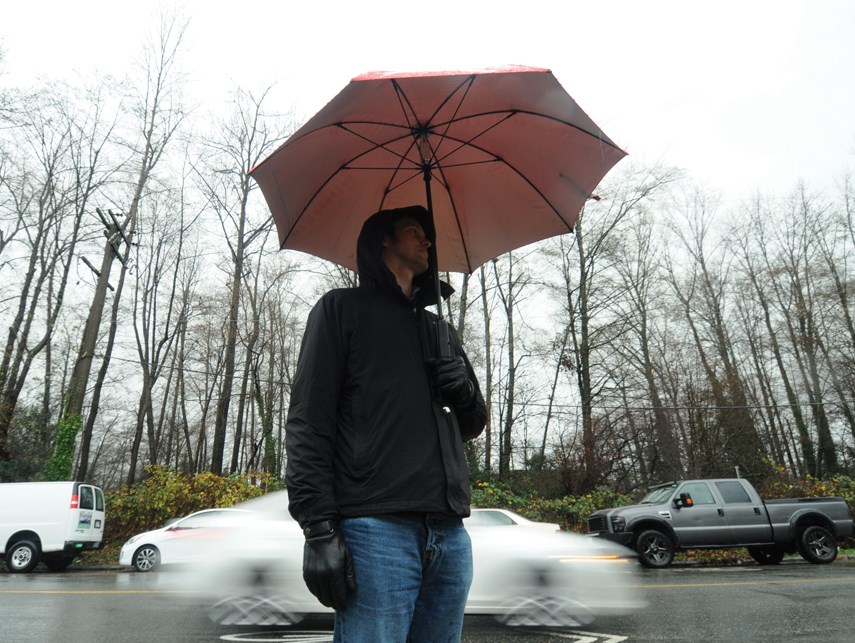You’re not imagining the relentless rain that’s been bucketing down on the North Shore for the past month.
November tied a weather record set in 1953 for the rainiest month. It rained for 27 out of 30 days last month – eight more than it does in an average Lower Mainland November.
And those weren’t days with just a light shower or drizzle.
The West Vancouver weather station recorded 325 millimetres of rain last month, compared to the North Shore average of 285 mm in November, said Armel Castellan, a meteorologist with Environment Canada.
The rainiest day of the month, Nov. 19, produced a downpour of 78 mm that resulted when one of several “atmospheric rivers” bringing warm bands of moisture from the sub-tropics hit the North Shore mountains.
Statistically, November is usually the wettest month (followed by January and February), said Castellan.
The only days it didn’t rain last month were near the beginning of November, during an unseasonably early Arctic outbreak that allowed Cypress and Grouse resorts to fire up their snow guns and open for skiing ahead of schedule.
But the sodden weather pattern is about to change, said Castellan.
Starting early next week, a strong ridge of high pressure will build over the south coast, resulting in clearer, brighter days.
The one catch: it’s possible the pattern could also result in an “inversion”, bringing cloud and fog down into areas of low elevation while mountain tops remain in the sunshine.
By January, effects of a weak La Nina weather pattern should be more apparent, resulting in colder than normal temperatures, said Castellan.
He added it’s difficult to say whether that will mean more snow, as La Nina years in the past have resulted in both above-average and below-average snowfall amounts.
Local ski hills are definitely hoping for the more-snow option. Mt. Seymour opened for skiing on Friday. Grouse and Cypress opened on Nov. 10.



